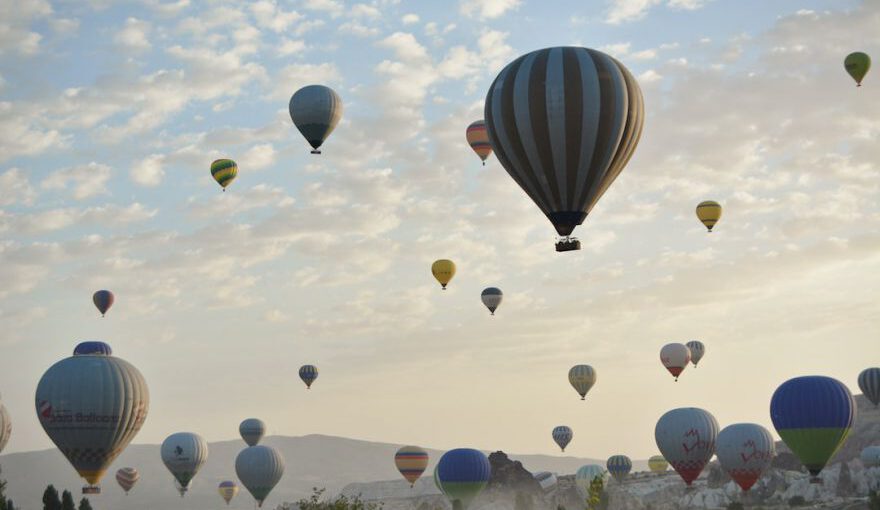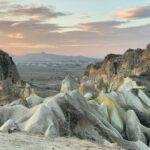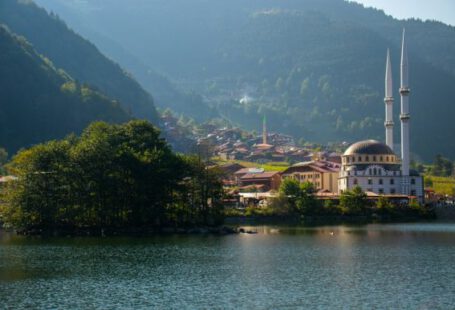Nestled in the heart of Turkey, Cappadocia is a region known for its breathtaking landscapes and rich cultural heritage. While tourists flock to see its famous rock formations and ancient cave dwellings, the region also boasts a diverse and unique array of flora and fauna. From endemic plant species to rare bird populations, Cappadocia offers a tantalizing glimpse into the wonders of nature. As a biologist, I have had the privilege of studying the region’s biodiversity, and in this article, I will share some of my insights and discoveries.
A Desert Oasis: The Flora of Cappadocia
Despite its arid climate, Cappadocia is home to a surprising variety of plant species. One of the most notable is the Cappadocian tulip (Tulipa cappadocica), which is endemic to the region. With its vibrant yellow petals and striking black center, this tulip is a true symbol of Cappadocia’s unique floral heritage. Another endemic species is the Cappadocian sage (Salvia cappadocica), a fragrant herb that thrives in the region’s rocky terrain. These endemic species, along with many others, have adapted to the harsh conditions of Cappadocia, making it a true desert oasis.
Beyond the endemics, Cappadocia also hosts a diverse range of plants that have found ingenious ways to survive in this challenging environment. The fairy chimneys, a hallmark of Cappadocia’s landscape, are not only a visual spectacle but also serve as a haven for various plant species. These towering rock formations provide shelter from the scorching sun and create microclimates that support the growth of mosses, ferns, and even small trees. The symbiotic relationship between the rock formations and the plant life they harbor is a testament to the resilience and adaptability of nature.
A Haven for Avian Diversity
Cappadocia’s unique geography and diverse habitats have also attracted a wide range of bird species. The region is particularly renowned for its raptor population, including the majestic imperial eagle (Aquila heliaca) and the elusive cinereous vulture (Aegypius monachus). These birds of prey are often seen soaring high above the valleys and canyons of Cappadocia, hunting for small mammals and reptiles. The cliffs and rock formations provide ideal nesting sites, offering protection and vantage points for these magnificent creatures.
In addition to raptors, Cappadocia is also a crucial stopover for migratory birds traveling between Europe and Africa. Every year, flocks of storks, flamingos, and pelicans make their way through the region, taking advantage of the abundant wetlands and agricultural fields. The wetlands of Göreme and Avanos are particularly important for these migratory birds, providing them with food and rest before they continue their long journey. The sight of these birds, with their vibrant plumage and graceful flight, is truly a spectacle to behold.
Conservation Challenges and Efforts
While Cappadocia’s unique flora and fauna are undoubtedly awe-inspiring, they are not without their challenges. The region’s booming tourism industry has put increasing pressure on the delicate ecosystems that support these species. Habitat destruction, pollution, and disturbance from human activities pose significant threats to the biodiversity of Cappadocia. As biologists, it is our responsibility to raise awareness about these issues and work towards sustainable solutions.
Fortunately, there are ongoing efforts to protect and conserve Cappadocia’s natural heritage. Local organizations and government agencies are working together to establish protected areas, promote responsible tourism, and educate visitors about the importance of preserving the region’s biodiversity. By supporting these initiatives, tourists can contribute to the conservation of Cappadocia’s unique flora and fauna, ensuring that future generations can continue to marvel at its natural wonders.
In conclusion, Cappadocia’s unique flora and fauna offer a fascinating window into the wonders of nature. From endemic plant species to rare bird populations, the region’s biodiversity is a testament to the adaptability and resilience of life. However, the conservation challenges it faces cannot be ignored. By appreciating and supporting the efforts to protect Cappadocia’s natural heritage, we can ensure that this remarkable ecosystem continues to thrive for years to come. So, the next time you visit Cappadocia, take a moment to marvel at its unique flora and fauna, and remember to tread lightly, leaving only footprints behind.





